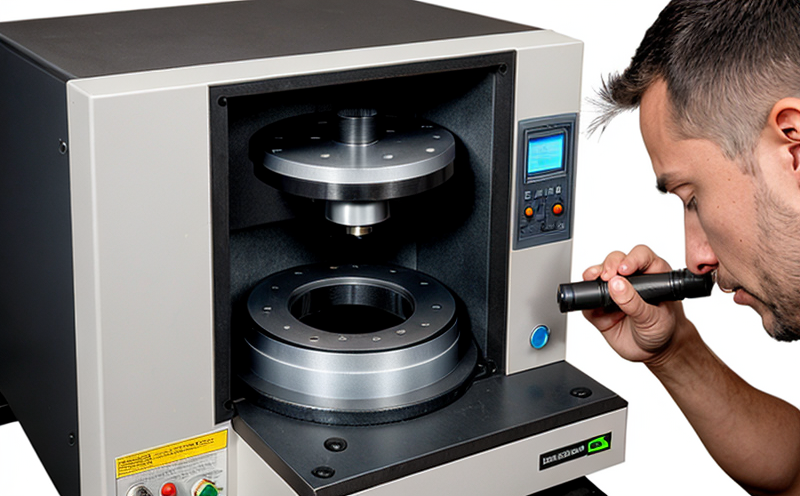ISO 4967 Determination of Non-metallic Inclusions in Steel by Microscopy
The ISO 4967 standard is a crucial method for the determination, classification, and quantification of non-metallic inclusions present within steel. This service ensures that the quality and performance of steel products meet stringent international standards.
Non-metallic inclusions can significantly impact the mechanical properties and reliability of steel components, especially in critical applications such as aerospace, automotive, and construction industries. The ISO 4967 method involves the use of optical microscopy to examine polished sections of steel specimens under controlled conditions. This process allows for detailed analysis of inclusions based on their size, shape, and type.
The testing procedure typically begins with the preparation of a polished section of the steel specimen using abrasive paper or mechanical grinding followed by fine polishing techniques. The use of appropriate reagents can help enhance contrast and improve visibility during the examination. Once prepared, the sample is mounted on a suitable slide and examined under an optical microscope equipped with appropriate magnification powers.
The standard specifies clear criteria for grading inclusions based on their morphological characteristics. These include round or irregularly shaped inclusions (e.g., sulfides), elongated inclusions (e.g., oxides), and other types like nitrides, carbides, etc. Grading is done using a scale provided by the ISO standard. This allows for consistent and reliable assessment of inclusions across different laboratories.
Post examination, detailed reports are generated that include images taken during the process along with descriptions of inclusion types identified. These reports serve as valuable tools for quality assurance departments to monitor compliance with specified standards throughout production processes. Additionally, they provide insights into potential areas where improvements might be needed within manufacturing plants.
The ISO 4967 method is widely recognized and accepted globally due to its reliability and repeatability. Compliance with this standard enhances the reputation of manufacturers who adhere strictly to these guidelines. It also ensures that products meet customer expectations regarding quality assurance practices.
Real-world applications
In practical scenarios, ISO 4967 plays a vital role in ensuring product integrity by identifying potential flaws early on during the manufacturing process. For instance, if high levels of sulfides are detected, corrective measures can be implemented immediately to prevent further production of defective materials.
Furthermore, compliance with this standard aids in maintaining long-term customer relationships through consistent delivery of high-quality products. It also opens up opportunities for businesses seeking to expand into international markets where adherence to global standards is essential.
Specimen Preparation
Accurate preparation of specimens is critical for accurate results using the ISO 4967 method. Properly prepared samples ensure that all non-metallic inclusions are exposed and visible under the microscope.
The process starts with careful selection of representative samples from each production batch or lot. These samples should reflect typical conditions encountered during actual manufacturing processes. After selecting suitable specimens, they need to be cleaned thoroughly using appropriate solvents before proceeding further.
Instrumentation and Equipment
To perform ISO 4967 testing effectively requires specialized equipment such as optical microscopes capable of providing sufficient magnification levels necessary for detailed observation. The microscope must also have adequate lighting to enhance contrast between background material and inclusions.
The use of digital cameras attached to the microscope facilitates capturing high-resolution images which can be used both during immediate reporting purposes and archival storage.
Why Choose This Test
Selecting ISO 4967 for determining non-metallic inclusions offers numerous benefits that cater to various aspects of quality management, compliance, research & development (R&D), and procurement activities within organizations.
From a compliance perspective, adhering to this internationally recognized standard demonstrates commitment to maintaining high standards of product quality. This enhances credibility among customers and stakeholders while reducing risks associated with non-compliance penalties or recalls.
Risk Management
By proactively identifying non-metallic inclusions through ISO 4967 testing, potential issues can be addressed early on preventing costly rework or scrap. This proactive approach contributes significantly towards effective risk management strategies implemented by organizations.
For R&D teams involved in developing new materials or improving existing ones, this test provides critical data that helps refine processes and formulations leading to enhanced product performance.
International Acceptance and Recognition
The ISO 4967 method for determining non-metallic inclusions enjoys widespread acceptance across industries worldwide. Its rigorous specifications ensure uniformity in testing procedures regardless of geographical location.
Recognized by major certification bodies like the American Society for Testing Materials (ASTM), European Committee for Standardization (CEN), and others, compliance with ISO 4967 fosters trust among international partners and suppliers. This recognition facilitates smoother transactions across borders reducing barriers to entry into new markets.
Global Standards
The alignment of this testing method with internationally accepted standards such as ISO 1008, ISO 2599, and others underscores its relevance in the global market. By embracing these standards, businesses position themselves favorably for international collaborations and partnerships.





